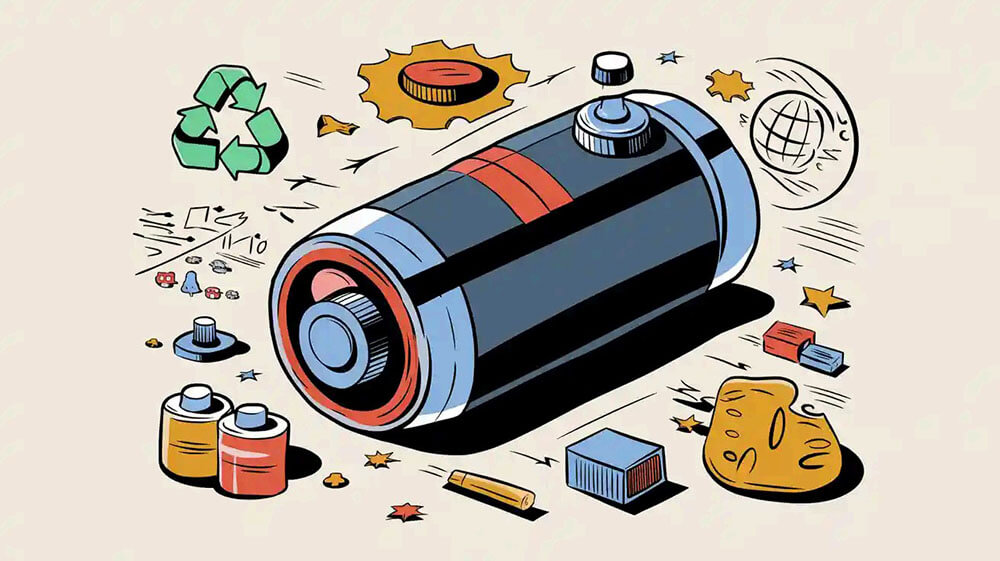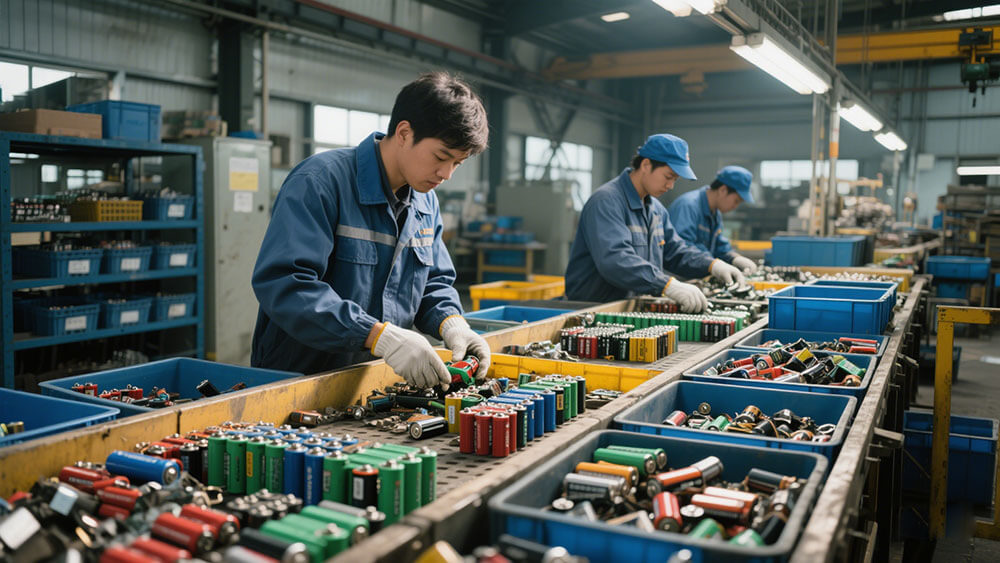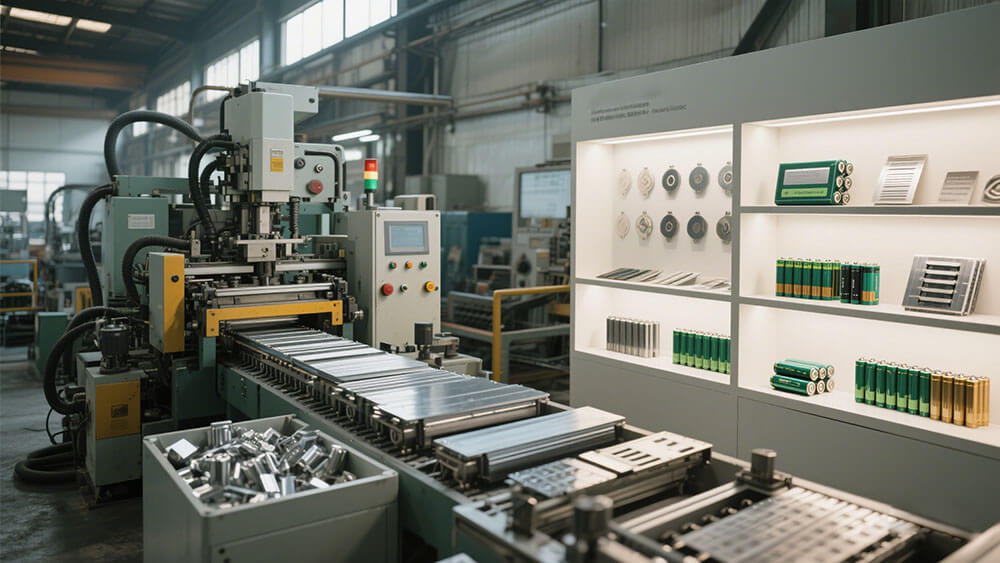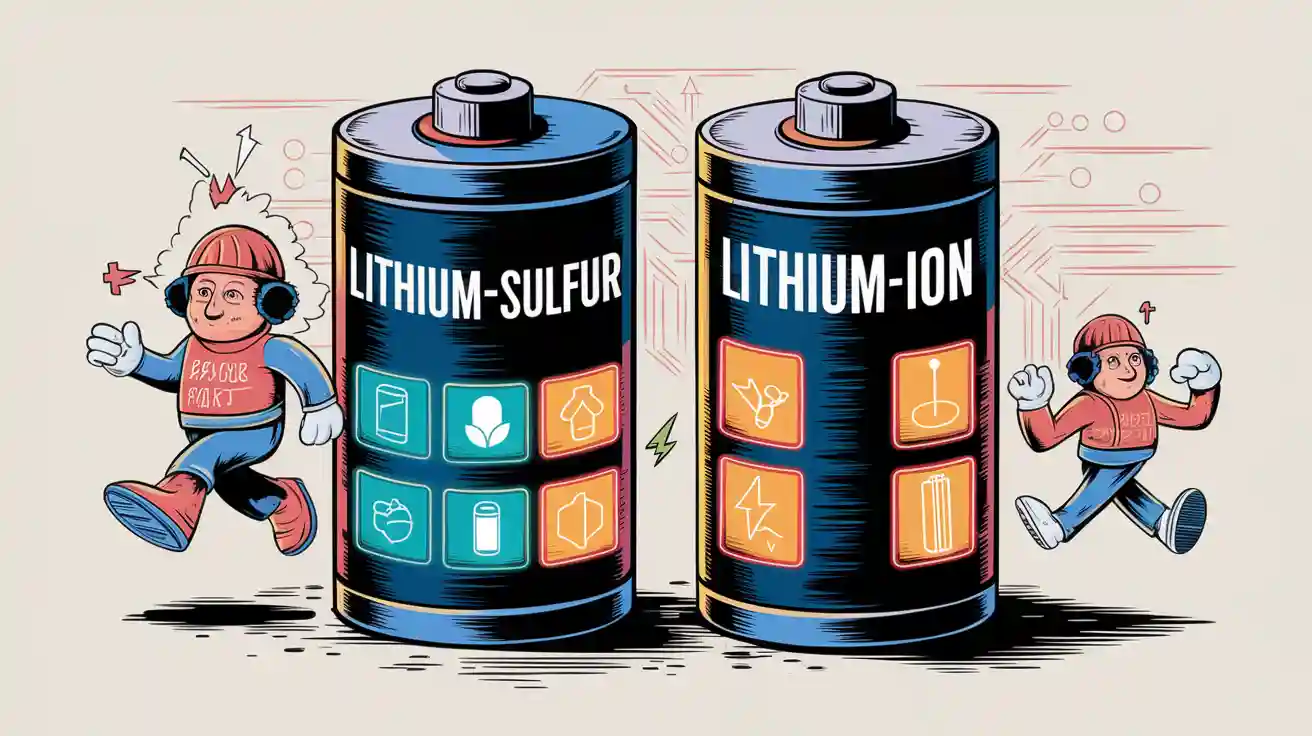Contents

The WEEE standard is crucial in addressing the challenges posed by waste lithium battery management. Each year, approximately 201 waste fires are attributed to lithium-ion batteries, leading to an estimated financial impact of £158 million in the UK. Alarmingly, only 2%-47% of rechargeable lithium batteries are recycled worldwide, despite their significant economic potential. Implementing safe battery removal practices alongside sustainable collection and recycling initiatives not only ensures adherence to European battery regulations but also protects key industries such as medical, robotics, and consumer electronics.
Key Takeaways
Following WEEE rules helps recycle lithium batteries safely and efficiently.
This lowers harm to nature and helps reuse valuable materials.
Using good methods like sorting and working with trusted recyclers improves recycling.
It also helps create a system where materials are reused again and again.
Using better recycling machines can recover more materials and meet global green goals.
This is good for both the planet and businesses.

Part 1: Overview of WEEE Standards
1.1 Definition and Scope of WEEE Standards
The Waste Electrical and Electronic Equipment (WEEE) standards are a set of regulations designed to address the growing challenges of electronic waste management. These standards aim to ensure the proper collection, recycling, and recovery of electronic equipment, including lithium battery packs. By establishing clear guidelines, the WEEE standards promote sustainable practices across industries such as medical, robotics, and consumer electronics.
The scope of these standards extends to all stakeholders involved in the lifecycle of electronic products. This includes manufacturers, distributors, and recyclers. For lithium battery recycling, the WEEE standards emphasize the need for safe handling and efficient recovery of valuable materials like lithium, cobalt, and nickel. These materials are critical for industries relying on advanced battery technologies, such as infrastructure and industrial sectors.
A report by the WEEE Directive highlights the increasing compliance with these standards, showcasing their effectiveness in promoting responsible waste management.
1.2 Key Objectives of the WEEE Directive
The WEEE Directive serves as a cornerstone for electronic waste management in the European Union. Its primary objectives include:
Reducing the environmental and health impacts of electronic waste.
Encouraging the recovery and recycling of valuable materials to support a circular economy.
Establishing clear responsibilities for producers, recyclers, and governments to ensure compliance.
For lithium battery recycling, the directive plays a crucial role in minimizing the risks associated with improper disposal. Lithium batteries, if not handled correctly, can lead to fire hazards and toxic leaks. By setting stringent collection and recovery targets, the directive ensures that these risks are mitigated effectively.
The ongoing evaluation of the WEEE Directive aligns with broader EU policies, such as the European Green Deal and the Circular Economy Action Plan. This alignment reinforces its objectives and ensures its relevance in addressing modern waste management challenges.
1.3 Application of WEEE Standards to Lithium Battery Recycling
The application of WEEE standards to lithium battery recycling is vital for industries that depend on these energy storage solutions. Lithium-ion batteries, commonly used in medical devices, robotics, and consumer electronics, contain materials that are both valuable and hazardous. Proper recycling ensures the recovery of these materials while preventing environmental damage.
WEEE standards provide a framework for the safe collection, transportation, and recycling of lithium batteries. For example, they mandate the use of certified recycling facilities equipped to handle the complexities of lithium battery packs. These facilities employ advanced technologies to extract materials like lithium and cobalt efficiently.
A study on WEEE recovery targets highlights the importance of meeting these targets to ensure compliance and promote sustainability. By adhering to these standards, industries can contribute to a more sustainable future while safeguarding their operations from regulatory risks.
For businesses seeking tailored solutions for lithium battery recycling, exploring custom battery solutions can provide significant advantages.

Part 2: Challenges in Recycling Lithium Battery Packs
2.1 Safety Risks: Fire Hazards and Toxic Leaks
Recycling lithium battery waste presents significant safety risks. Lithium-ion batteries can experience thermal runaway, a condition where rapid heating leads to the release of toxic and flammable gases. These gases, including hydrogen fluoride (20–200 mg/Wh) and phosphoryl fluoride (15–22 mg/Wh), can cause unpredictable explosions and fires. Such incidents burn at extreme temperatures, often melting metal containers and posing severe risks to human health and the environment.
In New York City alone, over 700 lithium-ion battery fires have occurred since 2019, resulting in at least 29 fatalities. Many of these incidents involved faulty batteries in e-bikes and e-scooters. These statistics highlight the critical need for stringent safety measures during the collection, storage, and recycling of lithium battery waste. Proper handling practices can mitigate these risks and ensure compliance with UK regulations for battery disposal.
2.2 Technical Barriers in Material Recovery
The complex structure of lithium-ion batteries creates significant technical barriers to recycling. These batteries contain various chemistries, such as NMC and LiFePO4, which complicate the recovery process. Accurate identification and sorting of valuable materials like lithium and cobalt remain challenging. Many recycling methods struggle to differentiate battery types, leading to cross-contamination and inefficient recovery.
Additionally, the lack of standardization in battery design increases costs and slows down recycling operations. Disassembly often requires manual labor due to non-uniform structures, further reducing efficiency. Addressing these barriers requires investment in advanced technologies and standardized practices to improve material recovery rates.
2.3 Environmental Impact of Improper Disposal
Improper disposal of lithium battery waste has severe environmental consequences. Contaminants from discarded batteries can leach into soil and water, causing long-term damage to ecosystems. Air pollution from burning e-waste further exacerbates these issues, harming both wildlife and human communities.
Studies emphasize the need for eco-friendly disposal practices to mitigate these impacts. Proper collection and recycling of batteries not only protect the environment but also support sustainable development. Educating industries on responsible disposal methods is essential for reducing the ecological footprint of e-waste.

Part 3: Best Practices for Disposing of Lithium Batteries
3.1 Safe Handling and Storage of Lithium Battery Packs
Proper handling and storage of lithium battery packs are critical to ensuring safety and maintaining compliance with industry standards. Mishandling batteries can lead to severe incidents, including fires and toxic leaks. You should follow established safety measures to minimize these risks.
Safety Measure | Description |
|---|---|
Mishandling | Avoid burning, disassembling, or puncturing batteries. |
Inspection | Check batteries for damage before use and dispose of damaged ones promptly. |
Transport | Protect terminals during transport and avoid dropping batteries. |
Charging | Use manufacturer-recommended chargers and ensure outlets meet voltage standards. |
Storage | Store batteries at 60-70% capacity in fireproof containers. |
Emergency Procedures | Have detailed steps for handling overheating batteries, including evacuation. |
While lithium-ion batteries are generally safe, understanding their potential hazards is essential. For example, storing batteries in a cool, dry area reduces the risk of thermal runaway. Additionally, reporting incidents and near-misses ensures continuous improvement in safety protocols.
3.2 Sorting and Labeling for Efficient Recycling
Sorting and labeling lithium battery packs correctly streamline the recycling process and improve material recovery rates. You should implement a systematic approach to categorize batteries based on their chemistry, such as NMC, LiFePO4, or LMO. This practice prevents cross-contamination and ensures efficient recycling.
Good practices for sorting and labeling include:
Using clear labels to identify battery types and chemistries.
Separating damaged batteries from functional ones to avoid safety risks.
Training employees on proper sorting techniques to enhance accuracy.
Producers and recyclers play a pivotal role in this process. For instance, manufacturers can design products that facilitate easy battery removal and identification. Partnering with Producer Responsibility Organizations (PROs) ensures that collection schemes align with industry standards.
3.3 Partnering with Certified Recycling Facilities
Collaborating with certified recycling facilities is one of the best practices for disposing of lithium batteries. These facilities possess the expertise and technology required to handle complex battery chemistries safely. By partnering with certified recyclers, you can ensure compliance with WEEE standards and improve recycling outcomes.
Case studies highlight the benefits of such partnerships. For example:
Brightmark’s Partnership Approach: Brightmark collaborates with materials recovery facilities (MRFs) to optimize material inflow. This approach incentivizes better recycling practices by purchasing pre-sorted bales instead of charging tipping fees.
Collaboration Benefits: Advanced recycling companies and MRFs enhance the efficiency of recycling systems, particularly for hard-to-recycle materials.
These partnerships not only improve material recovery rates but also contribute to a circular economy. For tailored recycling solutions, consider exploring custom battery solutions.
3.4 Leveraging Advanced Recycling Technologies
Advanced recycling technologies are transforming the way lithium batteries are recycled. Innovations like hydrometallurgy and pyrometallurgy enable the efficient recovery of valuable materials such as lithium, cobalt, and nickel. You can leverage these technologies to reduce costs and improve sustainability.
Evidence Type | Description |
|---|---|
Advancements in Technology | Innovations make battery recycling more efficient and economically viable. |
Government Funding | Funding supports improved metal recovery rates in recycling processes. |
Patent-to-Publication Ratio | A 2:1 ratio indicates strong commercial interest in LIB recycling. |
Geographical Dominance | Asian countries, particularly China, lead in LIB recycling innovations. |
Investing in these technologies ensures compliance with WEEE standards and aligns with global sustainability goals. For example, hydrometallurgical methods use chemical processes to extract metals with minimal environmental impact. By adopting such technologies, you can enhance recycling efficiency and contribute to a greener future.
For more insights on sustainable practices, visit Sustainability at Large Power.
Adhering to WEEE standards ensures safe and efficient lithium battery recycling. These regulations help you mitigate environmental risks and recover valuable materials. Collaboration among manufacturers, recyclers, and industry professionals strengthens compliance and innovation.
Tip: By adopting best practices, you protect ecosystems, enhance safety, and contribute to a sustainable future. Explore custom battery solutions to align with these goals.
FAQ
1. What are the benefits of adhering to WEEE standards for lithium battery recycling?
Adhering to WEEE standards ensures compliance, reduces environmental risks, and promotes material recovery. It supports industries like medical, robotics, and infrastructure.
2. How can industries improve lithium battery recycling efficiency?
Industries can improve efficiency by partnering with certified recyclers, adopting advanced technologies, and implementing sorting systems for chemistries like LiFePO4 and NMC.
3. Why choose Large Power for custom battery solutions?
Large Power offers tailored solutions for lithium battery recycling, ensuring compliance with WEEE standards and supporting sustainable practices across industries.





